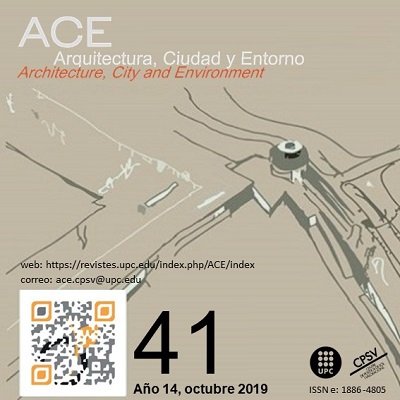Interventions of rehabilitation in large housing estates built during the period 1950-1975
DOI:
https://doi.org/10.5821/ace.14.41.6538Keywords:
Large housing estates, housing refurbishment, housing improvement, urban renewalAbstract
Objective
The objective of this research is to provide an updated state of the art of the interventions of rehabilitation in large housing estates built during the period of 1950-1975 in Europe, especially those interventions that focused on the modification of physical aspects, with the aim of providing analytic instruments that can be applied in future research on the implementation of verified intervention models.
Methodology
This work is based on the study of the abundant existing casuistic of interventions carried out in European housing estates during the last decades since the moment of construction, considering the very diverse procedures and scales of transformations that vary from those oriented to the maintenance and rehabilitation of the original housing estate to the demolition of the totality of buildings and complete urban redevelopment of the site.
The study of different cases is used to elaborate a classification of the forms of intervention that provides a compared analysis of the existing casuistic, both regarding the instruments of intervention and their scale and impact on different housing estates and contexts.
Finally, the elaboration of compared chronologies of interventions according to each study case and each different county provides a further understanding of the evolution and current tendency of the forms of intervention.
Conclusions
The comprehensive understanding of the executed interventions in each studied housing estate envisions a progressive diversification of instruments of intervention aiming at achieving impact on the global scale. Nevertheless, it is noticeable how neither the different forms of intervention or the scale of their economic investments have been able to guarantee, in the studied cases, a long-term solution to the real problematics that had motivated their development and implementation. The success of a physical intervention of rehabilitation in an urban and social reality highly depends on the consideration of the real forms of incidence in the diverse physical sales and social situations that influence behaviours and aspirations of the resident population.
Originality
The present paper offers a classification of the diverse forms of physical intervention that have been implemented in several study cases. A contribution that provides a comparative analysis of the forms of intervention and their evolution in time according to each studied case and country, offering a panoramic review of the European context from a transversal perspective.
Downloads
Published
Issue
Section
License
| INTELECTUAL PROTECTION CRITERIA |
At this moment, it is count with the "Oficina Española de Patentes y Marcas", while global protection it is being processed by the World Intelectual Property Organization (OMPI/WIPO). Nevertheless the International Standard Serial Number Office (ISSN) has given the following numbers ISSN: 1886-4805 (electronic version) and 1887-7052 (paper version). All articles will be peer reviewed, using double blind reviewing. |
| COPYRIGHT |
The article contents and their comments are authors exclusive liability, and do not reflect necessarily the journal editor commitee's opinion. All ACE published works are subject to the following licence CC BY-NC-ND 3.0 ES http://creativecommons.org/licenses/by-nc-nd/3.0/es/ It implies that authors do not hold nor retain the copyright without restrictions but only those included in the licence. |





































